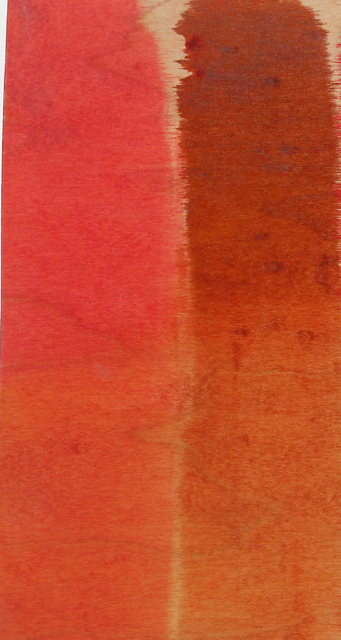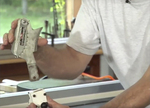We may receive a commission when you use our affiliate links. However, this does not impact our recommendations.

The left dye is Transtint metalized dye. The right dye is Lockwood analine dye. Both are water-soluble. I covered the top half of the panel and put it in a west-facing window for six months. You can see that both dyes faded (on the lower areas) but the analine dye faded more than the metalized dye.
All dyes fade much faster than pigment when exposed to bright light – sunlight and fluorescent light being the worst culprits. But some types of dye fade faster than others.
The worst for fading are the natural vegetable dyes, such as walnut husks and berries. These were sometimes used centuries ago, but they were replaced in the late nineteenth century by “aniline” dyes.
These are usually acid or basic dyes derived from various chemicals. They quickly replaced natural dyes in the textile industry and then entered the woodworking industry. They are available to woodworkers today in powder form to be dissolved in a solvent, usually water.
In the middle twentieth century a new class of chemical dyes, called “metalized” or “metal complex” was developed. These dyes are usually packaged in liquid form (sometimes in powder form) and are more fade resistant than the aniline powder dyes, but the range and richness of colors is somewhat inferior. These metalized dyes are often marketed as fade resistant.
This is the problem because unless you are building something that won’t be exposed to sunlight, even through a window, or you don’t expect to last very long, dye isn’t the way to go. You should use a stain based on pigment.
– Bob Flexner
Here are some supplies and tools we find essential in our everyday work around the shop. We may receive a commission from sales referred by our links; however, we have carefully selected these products for their usefulness and quality.









